Remembering Them: World War One and Toodyay
Exploring the social impact and human cost in a rural Western Australian community
ANZAC memorial service, Toodyay 1920s
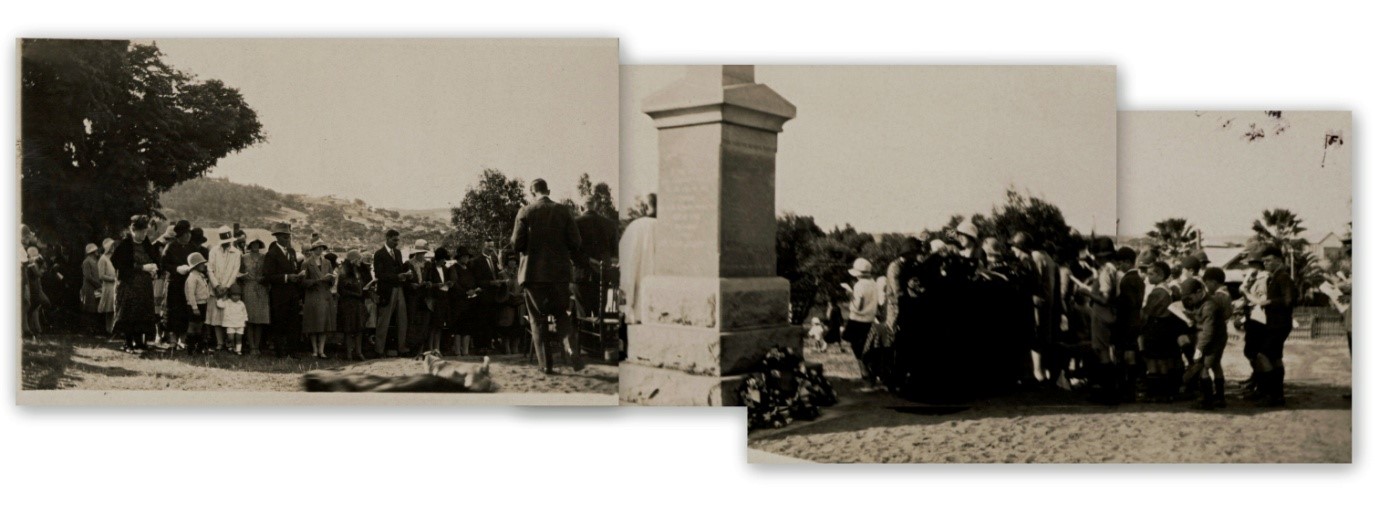
Image compiled from three photographs
Shire of Toodyay local history collection 2014.245a-c
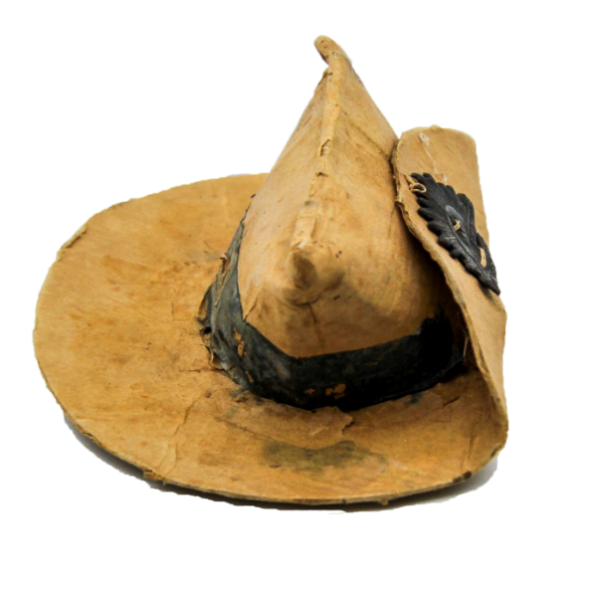
Cardboard model of Australian Army Slouch Hat made by Harry Ewels. Killed in Action in Belgium in 1915 2020.131
This digital exhibition is based on the exhibition presented in the Newcastle Gaol Museum between April 2015 and April 2016, which was part of the State-wide “Remembering Them Project”.
*see acknowledgement at the end for more information about this project
Leading up to, and the beginning of war
1911
The Toodyay district was a well-established agricultural community with a population of 1,001. The Avon valley that included Toodyay, was at that time the most productive agricultural area of Western Australia and provided the bulk of the state’s wheat harvest.
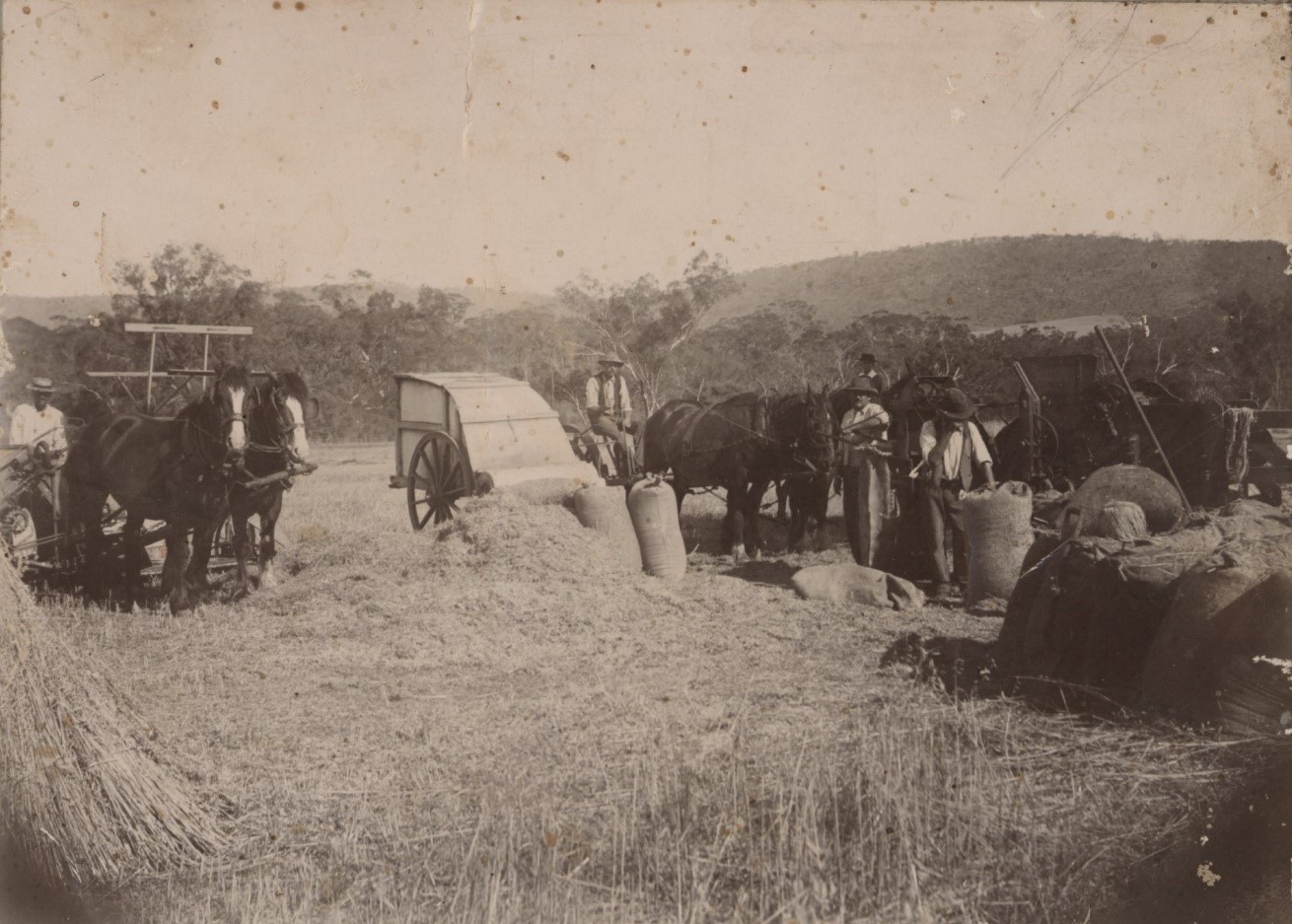
Harvesting grain, early 20th century 2001.987
1914
Australians learnt of their involvement in the conflict on 5 August 1914 when Britain declared war on Germany.
In Toodyay local affairs were of more concern. These included the forthcoming federal election and a controversy over the new fire brigade building. The land was also suffering from frost, hail, red rust and grasshopper plagues, but most pressing was the problem of severe drought.
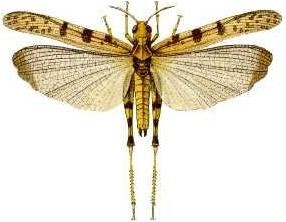
Australian plague locust Courtesy Wikipedia
1915
Until early 1915 the community was primarily concerned with its immediate problems. However government war precautions and controls on the economy began to make a presence in newspapers.
The end of the drought in early 1915 and the landing of Australian troops at Gallipoli in April changed Toodyay residents’ views of the war.
Timeline information sourced from research thesis by Stephen Anstey 1980 “The Impact of the Great War on the Beverley, Toodyay & Murchison Goldfield Communities of WA 1914-1917”
Rising sun badge
The official insignia of the Australian Army. This design - the 3rd in the series - was in use between 1904 and 1949.
The rising-sun image had already been employed elsewhere in colonial Australia (on coins and military regalia) and may represent the dawning of a young nation.
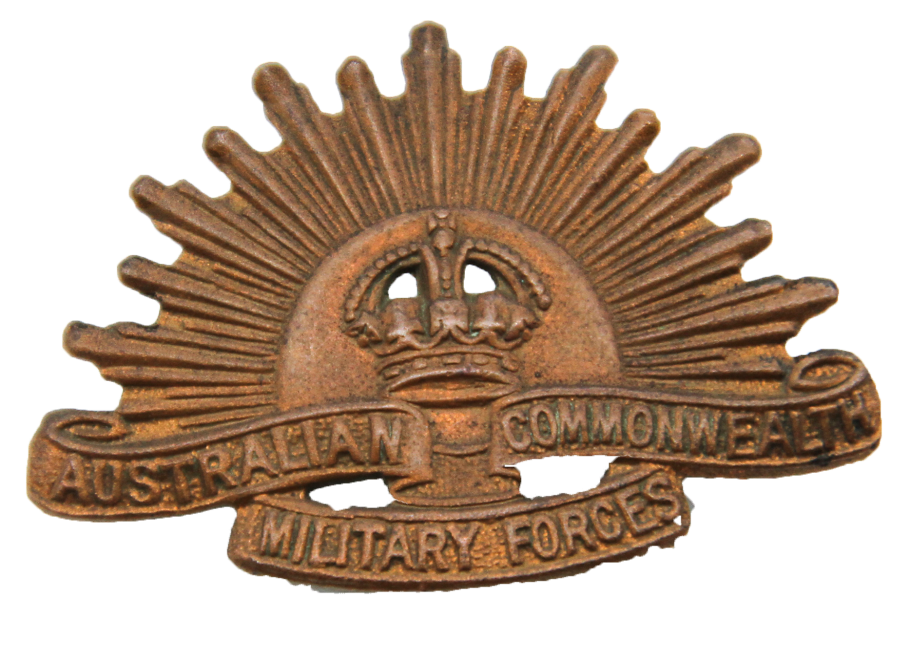
Rising sun badge 2020-4b
War in a foreign land
Cheops pyramid photograph
The men of the original West Australian raised 11th Battalion were camped in Egypt where they trained before landing at Gallipoli. On the 10th January 1915 they posed for a photograph at Khufu (Cheops) Pyramid, Giza.
It is highly likely Frank Keith Marshall of Bejoording is amongst the group and also possibly Walter Hugh Quarrie of Bolgart. Walter was killed in action in July 1915. Frank was wounded, losing an eye in September 1915, before returning home.
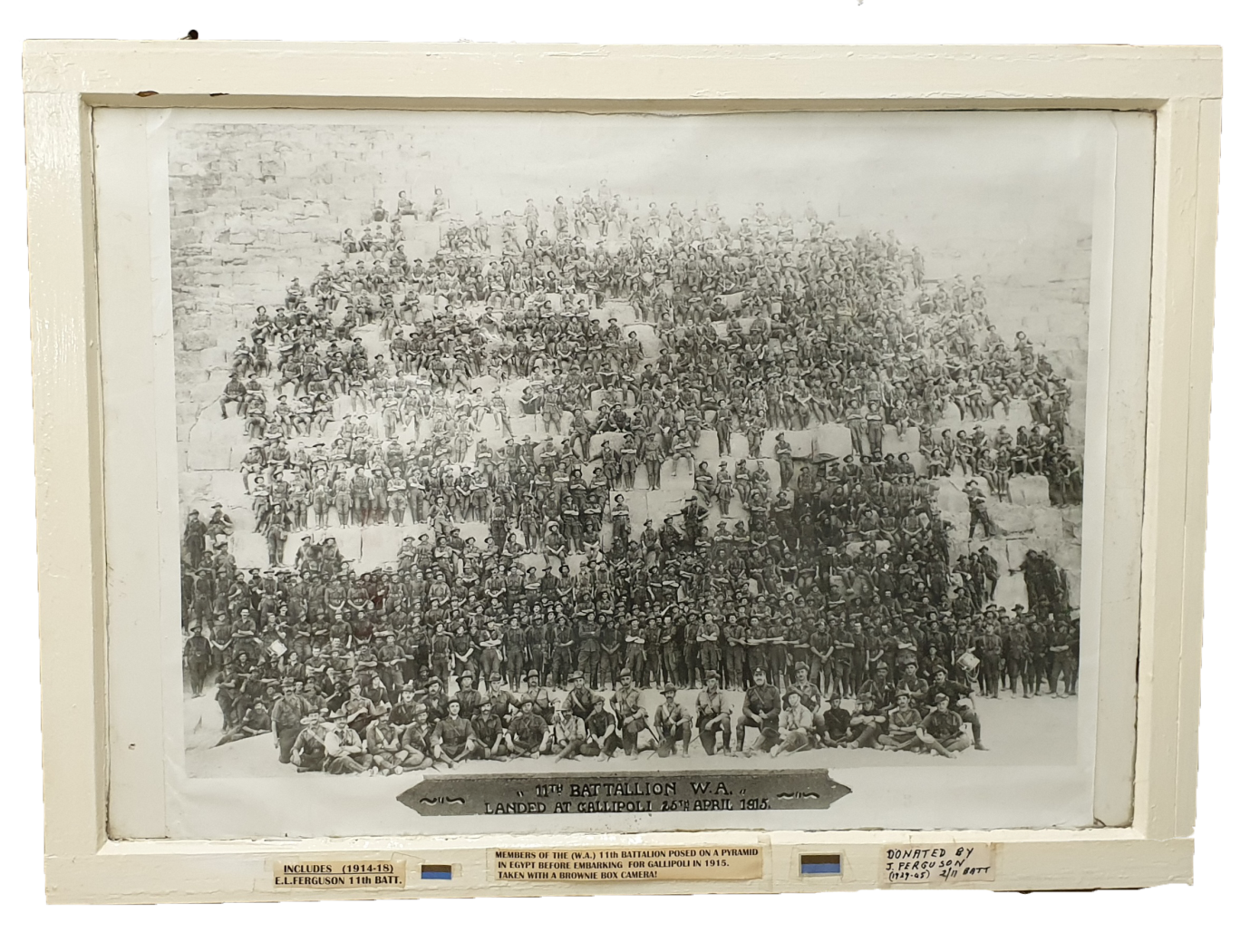
Photographic reproduction mounted behind a wooden framed glass window 2001.275
Herbert Edward Matthews…survival, but at a terrible cost
Herbert Edward Matthews, born 1892, was a single man and a farm labourer when he enlisted in October 1915. By August 1916 he was at war on the Western Front.
In November he went to England for treatment to a gunshot wound, returning in February 1917. By April he was again hospitalised, this time with trench fever, and was repeatedly infected until he returned to Australia in August 1917.
Severely affected with a dilated heart, rapid pulse and dizziness, Herbert was discharged in May 1918, and returned to Toodyay.
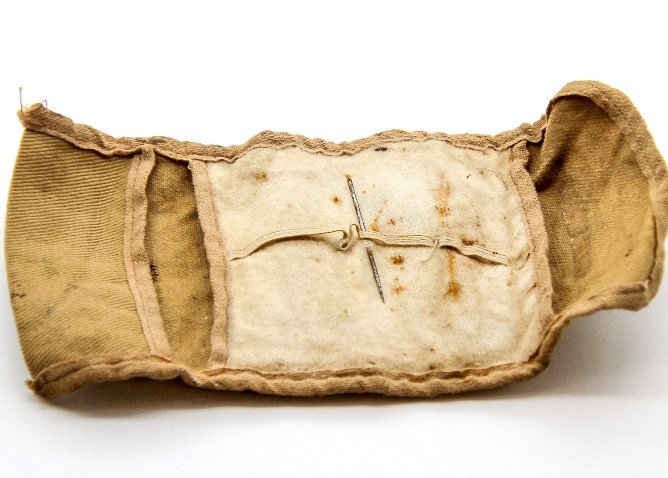
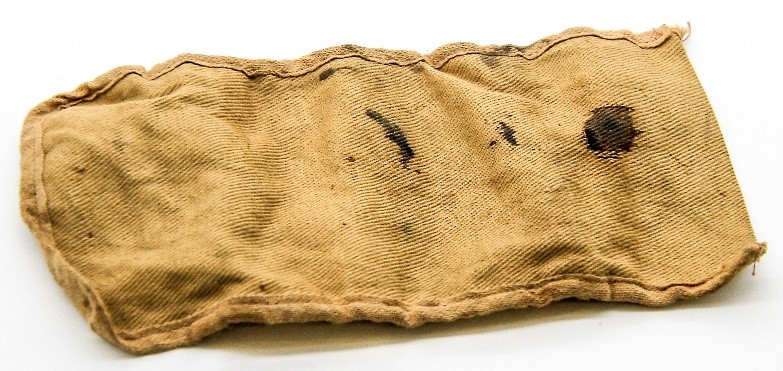
Small hessian pouch, WW1 era. Possibly sewing or first aid kit. Owned either by Harry Ewels or his brother-in-law John Alexander Smith 2020-133
Trench Fever
Trench fever, first discovered in 1915, is transmitted by body lice and reached epidemic proportions on the Western Front, where men were forced to live in close proximity in narrow trenches, in squalid conditions. Lice infestation was widespread and effective control impossible; many men became afflicted with recurring debilitating symptoms.
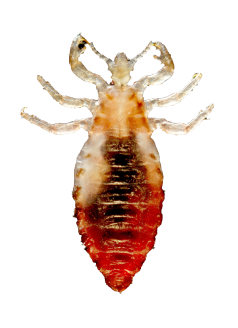 An adult body louse, about the size of a sesame seed. Courtesy Wikipedia
An adult body louse, about the size of a sesame seed. Courtesy Wikipedia
Tokens
Handkerchiefs were sent home as tokens of affection to mothers, wives and girlfriends.
This one was sent to Mary Britt of Toodyay by her son William. William never returned home – he was wounded at Gallipoli in 1915 and killed in action in France in June 1918.
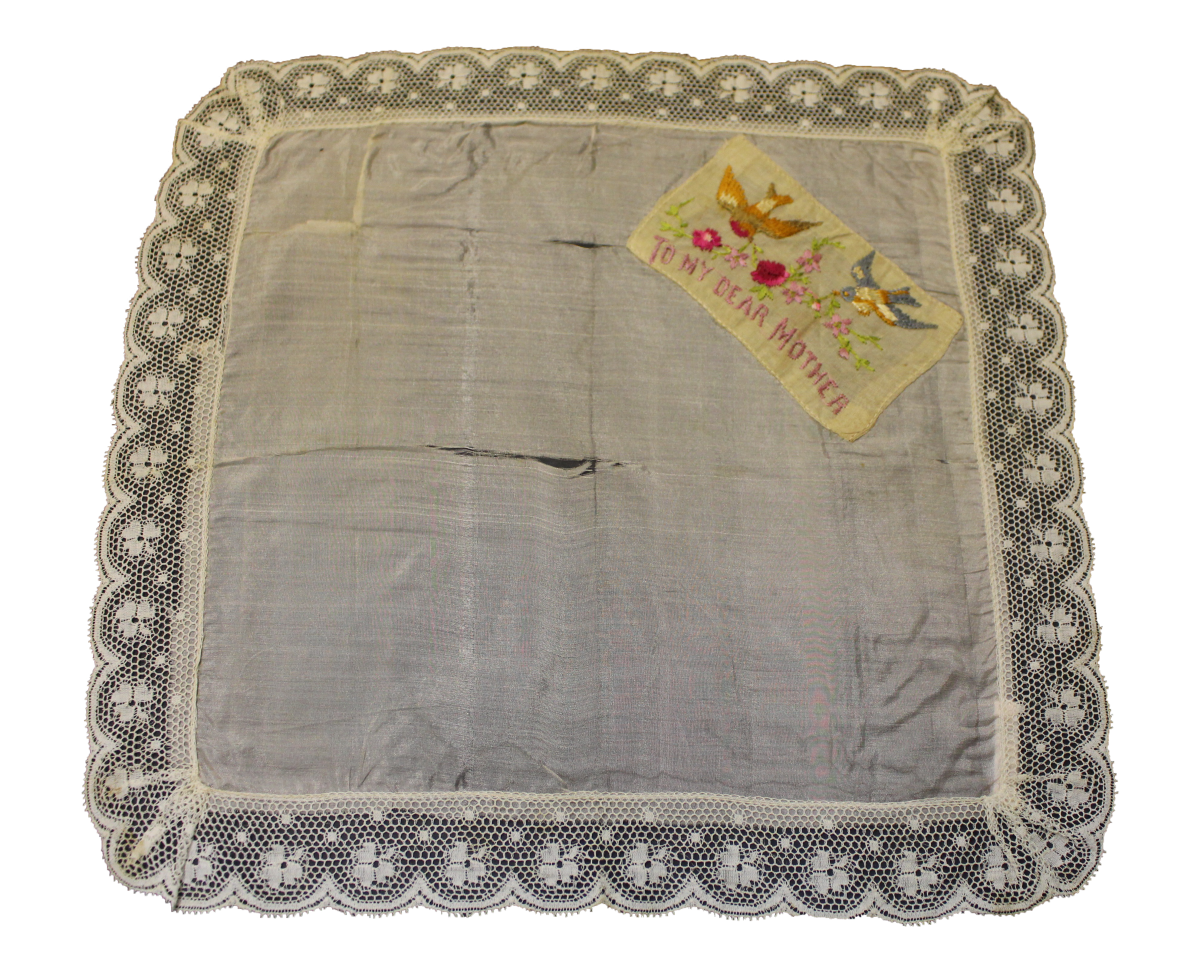 2001.159
2001.159
Aboriginal soldiers from Toodyay - John Blurton & Lewis Burton
In 1909 the Defence Act prevented those who were not of “substantially European descent” from joining the armed services. In spite of this, when war broke out many Aboriginal men tried to enlist.
John Blurton enlisted in 1917 but was discharged from Blackboy Hill Camp after two weeks as “not being substantially enough [of] European origin.” Lewis Burton was a nurseryman at Blackwood Nursery, Myalup. His mother, Jessie Burton, worked for L. Clarkson of Bolgart. Lewis, aged 23 on enlistment, served in France.
Although treated as equals in the army, when Aboriginal soldiers returned to Australia they continued to be discriminated against in areas of education, employment and civil liberties.
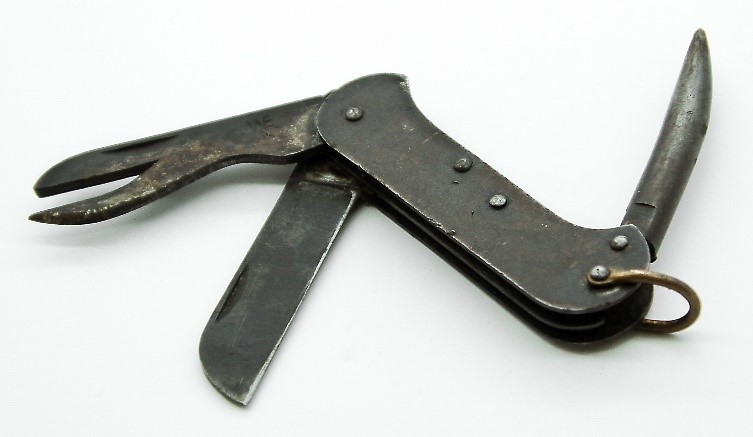
Pocket knife with blade, can opener and horse hoof pic. With Government Issue symbol, WW1 era. 2020-134
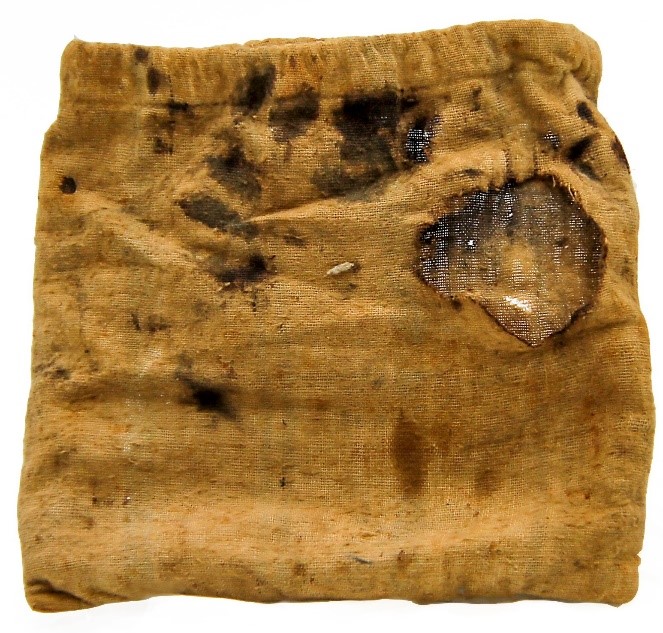
Small hessian bag 16cm x 16cm, with drawstring, WW1 era. Shows obvious signs of use and has staining and burn mark holes and tears in fabric. 2020-132
Souvenirs from the front
This German-made gas mask was souvenired as a trophy of war, as was the German-made armour piercing shell brought back to Toodyay by WJ Markey. A metal fragment, assumed to be shrapnel, was saved by John Alexander Smith.
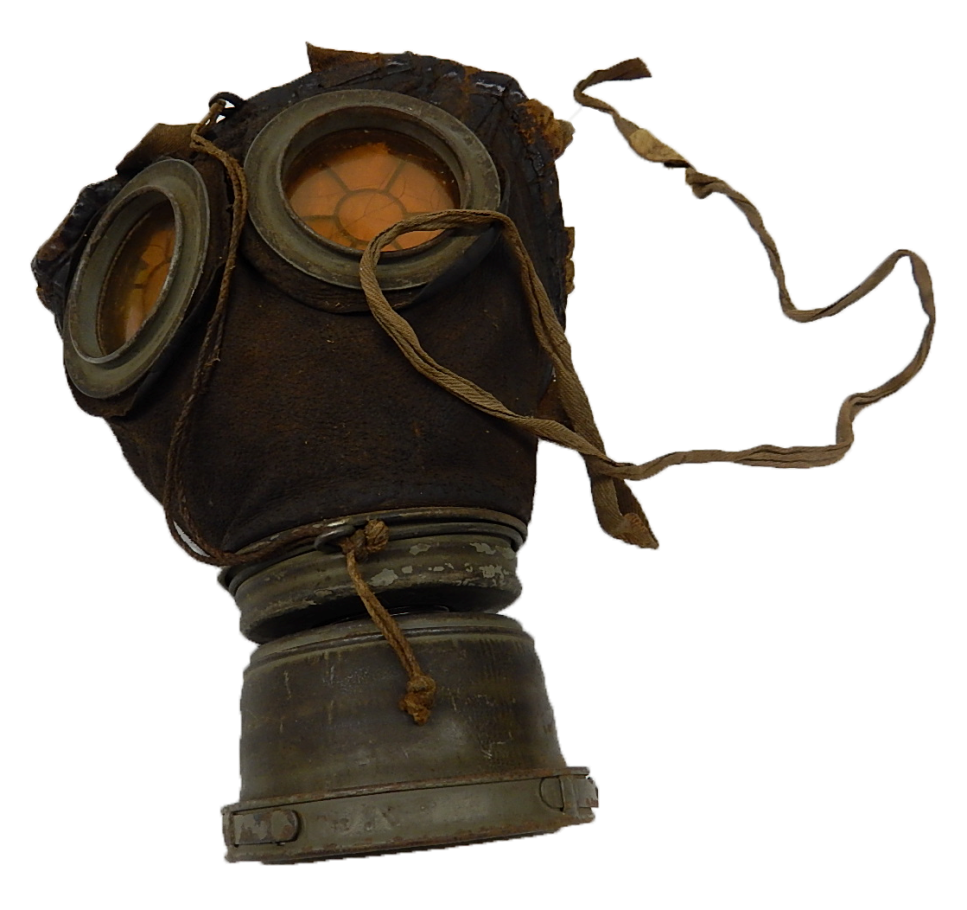
German-made gas mask 2001.314
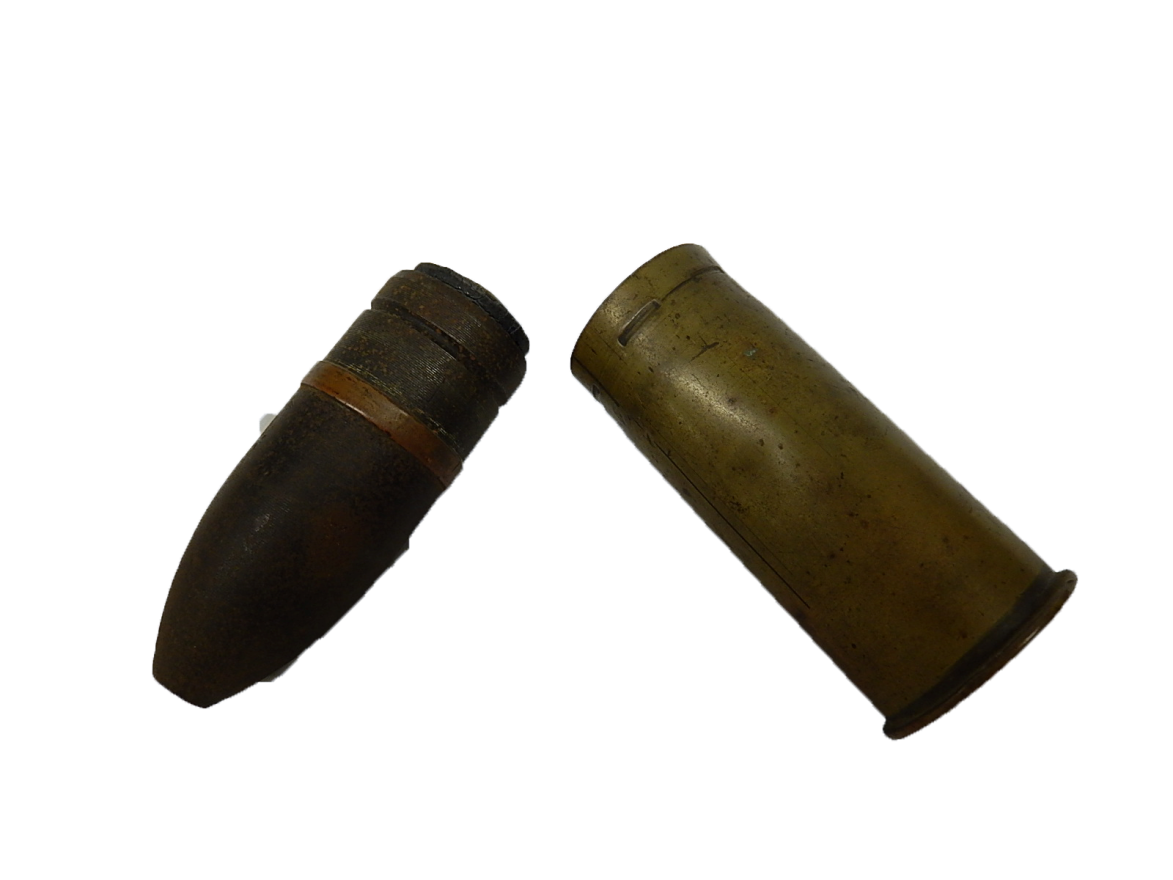
German-made (1918) armour piercing shell with original detonator (on left).
After some seepage was noticed in 2018 the detonator was destroyed and a replica made to be displayed with the casing. 2001.210
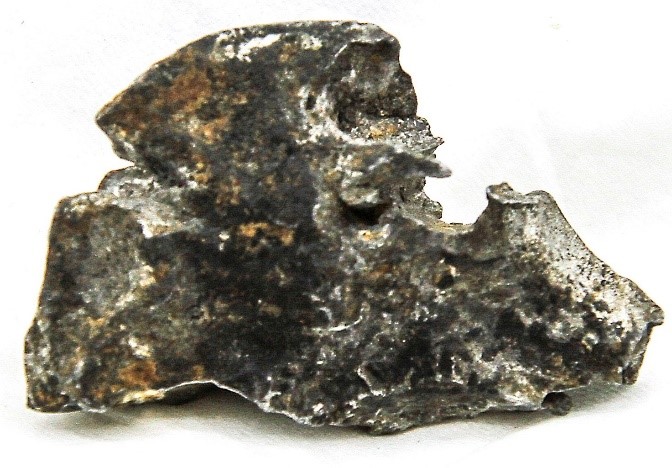
Steel fragment, possibly part of a piston 2020.136
William Sinclair... the ultimate sacrifice
Augustus William Sinclair was killed in action at Gallipoli on the 6th August 1915.
This newspaper clipping has been preserved by generations of the Sinclair family alongside treasured family photographs.
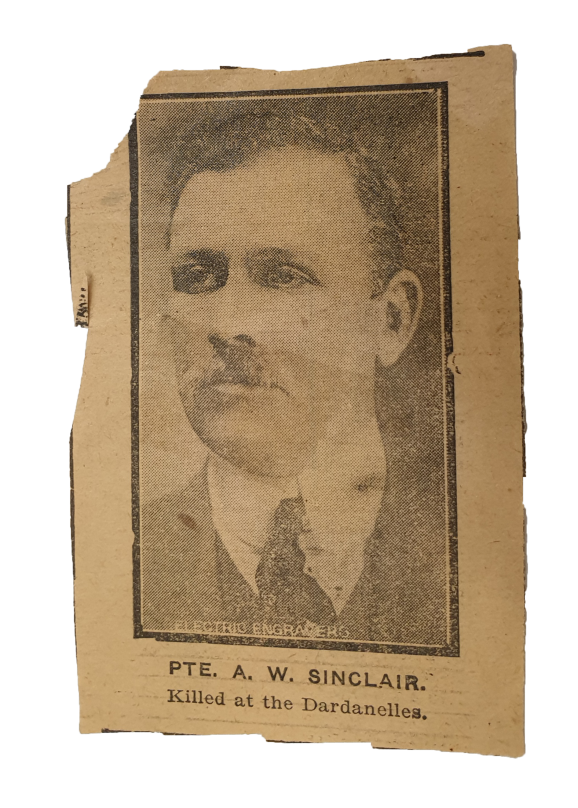
Newspaper clipping, Private AW Sinclair 2014.8
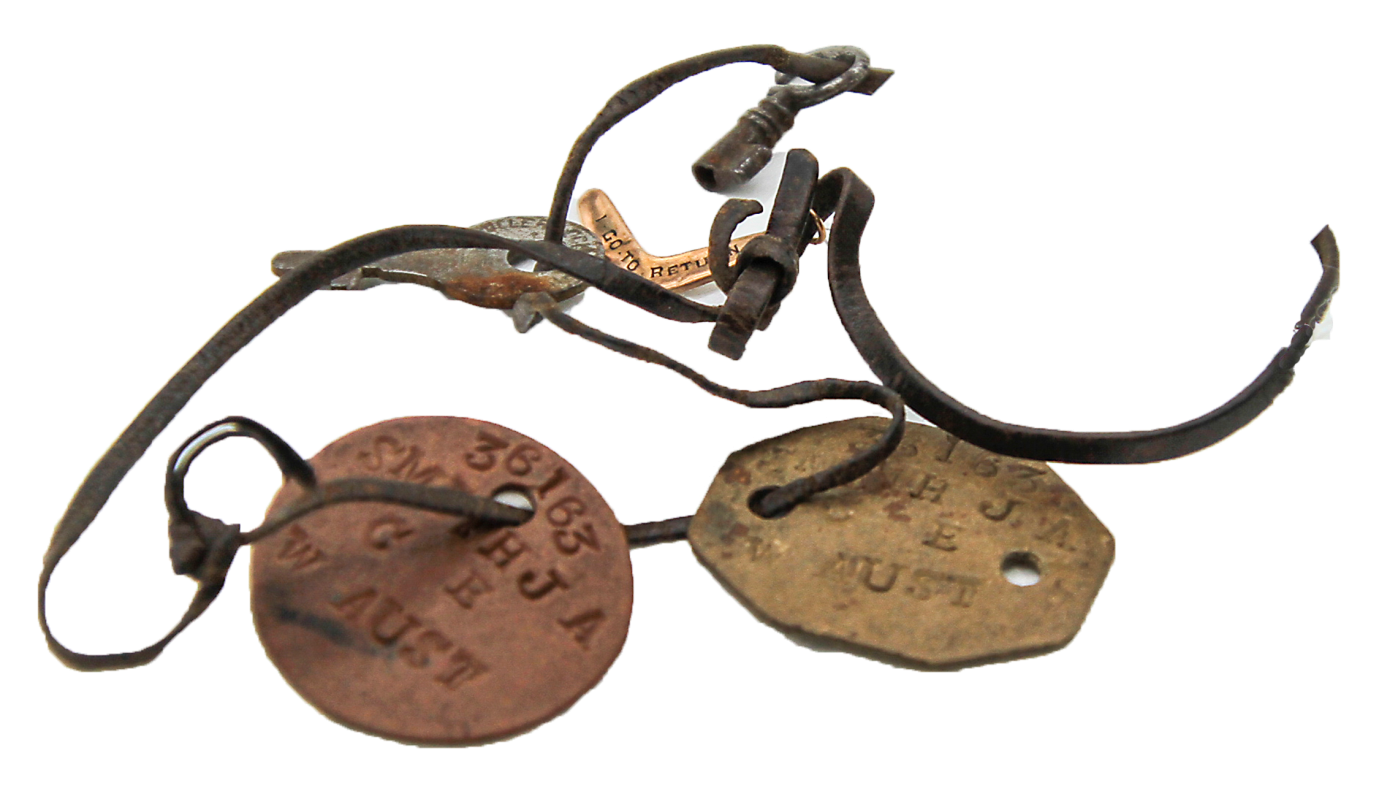
Set of Australian military identity tags worn by John Alexander Smith who served in France as a gunner. He survived WW1 and served on the home front during WW2 2014.81
At home
William and Ruth Strahan
Orchardist and Toodyay Road Board member William Henry Strahan was aged 44 when he enlisted in September 1914. His wife Ruth cared for their ten children while William travelled to Gallipoli to take part in the landing. William died within the first few days of the campaign.
Herbert Strahan followed his father to war in November 1916; at age 20 he required his mother’s consent to enlist. Despite wounds and dysentery he survived, dying in 1987 aged 90.
The War Pensions Act 1914 provided compensation for families, including a war widows’ pension. This was insufficient to live on and Ruth was fortunate to retain the Toodyay orchard ‘Strathavon’.
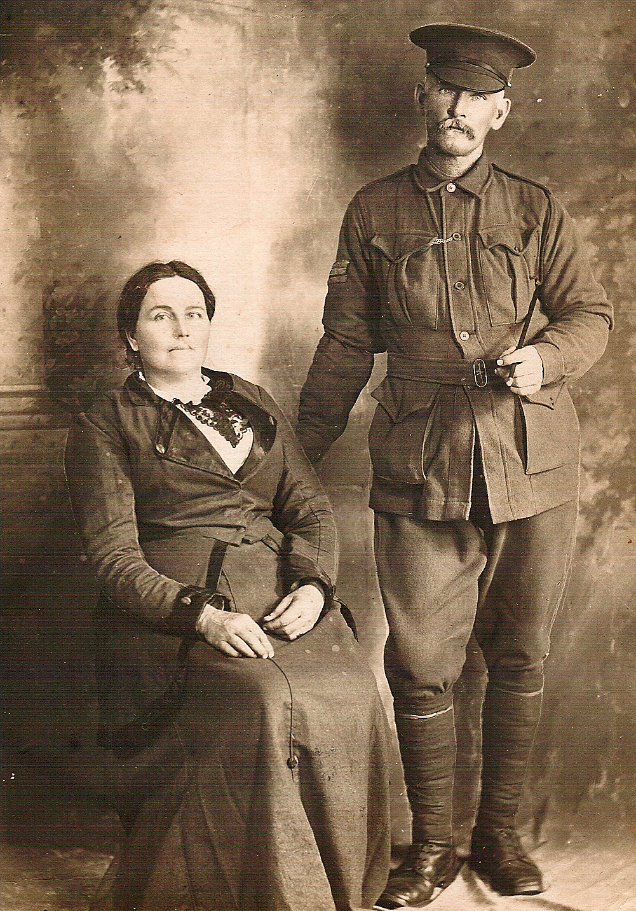
Ruth & William Strahan
1916 Referendum on Conscription
By late 1916 the majority of Toodyay residents felt they had done their fair share towards the war effort. The maintenance of primary production, the support of patriotic causes and the enlistment of men from their community was, they believed, proof of their commitment.
Australia wide saw 51% oppose conscription. In W.A., however, nearly 70% supported it. In Toodyay the vote was above the state average at 74%.
Stephen Anstey 1980, “The Impact of the Great War on the Beverley, Toodyay & Murchison Goldfield Communities of WA 1914-1917”
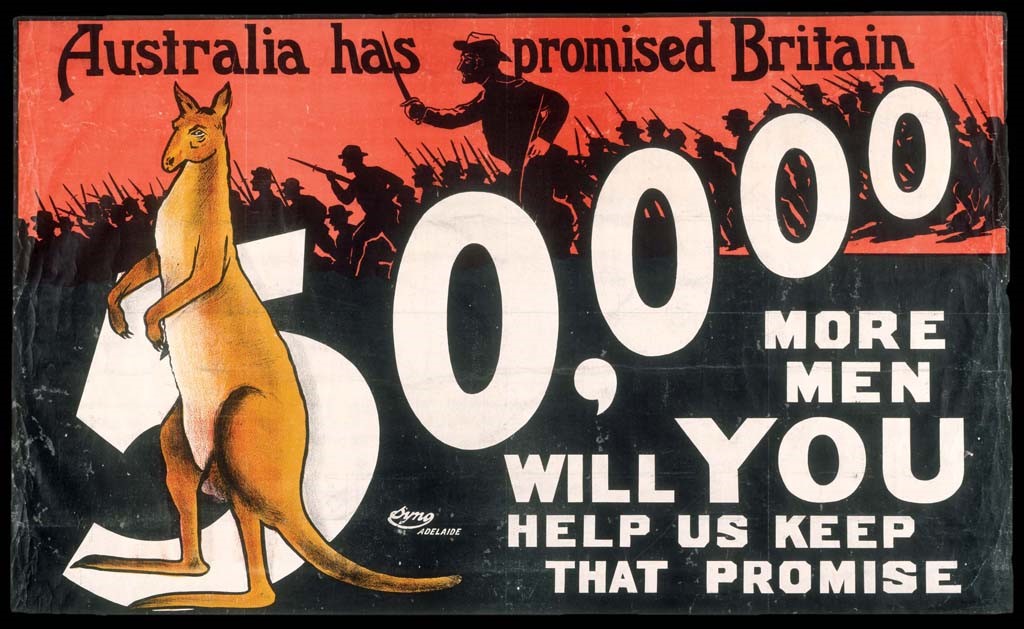
Poster encouraging enlistments, 1915 Courtesy: Wikipedia
Fundraising
Fundraising was a focus for patriotism and social interaction. The Toodyay community was particularly inventive in ways to raise funds.
Raffles offered prizes such as ‘valuable guinea stockings’ and the Toodyay Road Board made the Shire Hall freely available for ‘patriotic entertainments’. Sewing bees provided articles of clothing for troops.
A bag of wheat was donated to the Red Cross and sent to Toodyay by rail. Unfortunately a horse managed to get at the contents and ate ‘sufficient to cause its death’.
A huge pumpkin grown by Mr. KW Norman and christened ‘Big Ben’, was presented to the Toodyay Sandbag League to raise money. Placed in the window of what is now the Christmas 360 shop (on Toodyay’s main street) a weight guessing competition was conducted. After its disposal the seed remained the property of the League.
As war progressed needs altered and fundraising changed in response. In Toodyay, a Welcome Home Committee was formed and greeted returning soldiers.
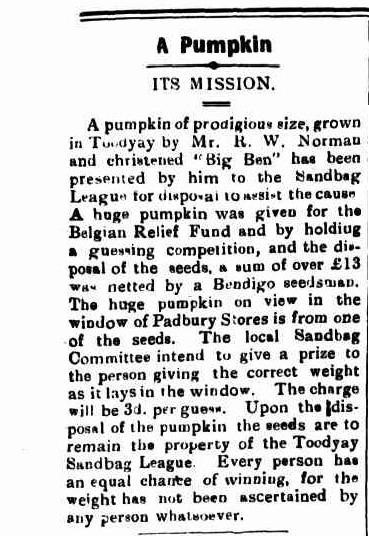
Toodyay Herald, 29th January 1916 Courtesy: Trove
Red Cross Fund
The Red Cross Fund was set up in Toodyay in August 1915. Women formed a Red Cross sewing circle to make bandages, bed linen, toiletries bags and pyjamas for injured soldiers in Fremantle and to be sent overseas. They also coordinated the collection and distribution of Red Cross subscription money and gifts.
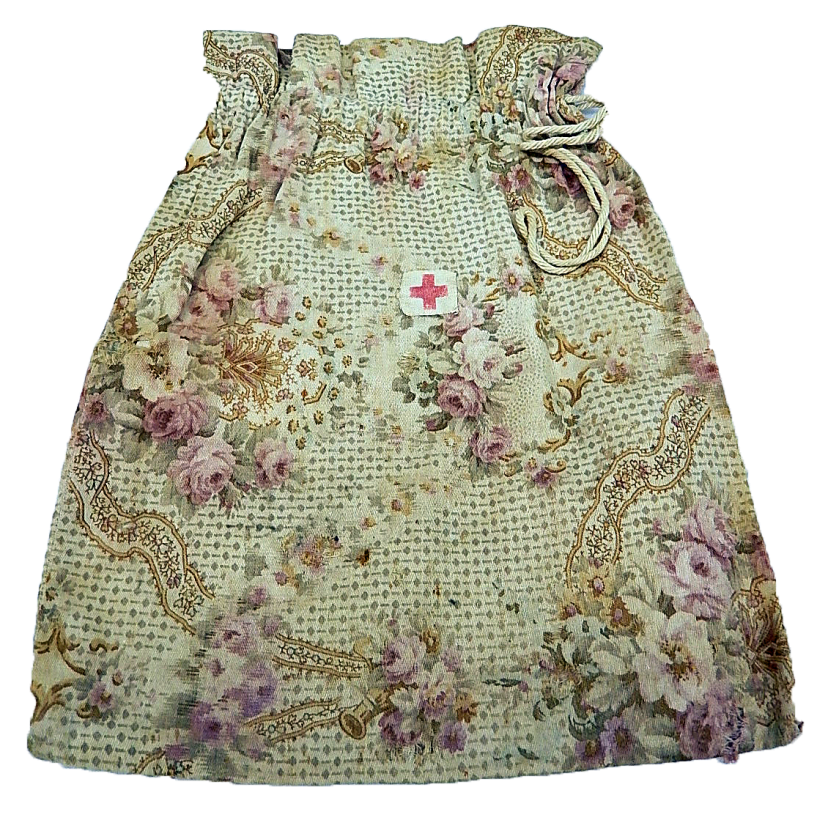
Toiletries bag, labelled W. Markey 2001.395
William Markey served in France as an ambulance driver, returning to Australia in 1919. William was in hospital fairly regularly, both on the field and in London. His ailments included influenza, bronchitis and trench fever.
Westralia Gift Book
The Westralia Gift Book was first produced in 1916 in Perth and sold in aid of the YMCA’s military work and the Returned Nurses’ Fund. This copy was owned by Toodyay resident G. Whitfield.
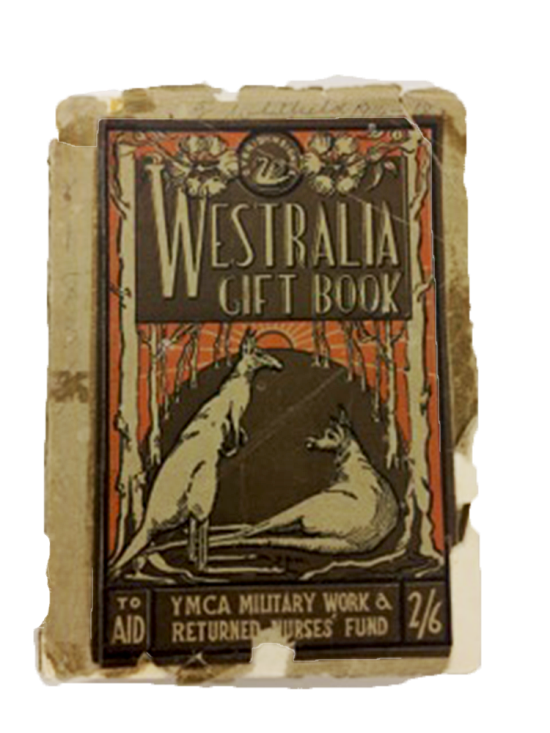
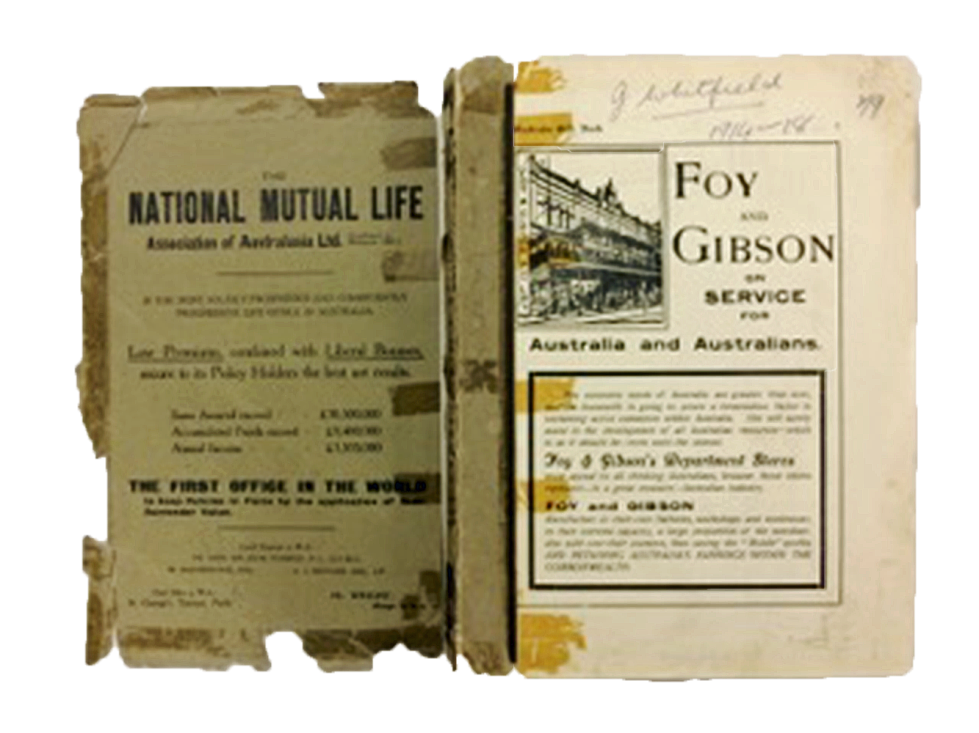
Westralia Gift Book 2016.36
Toodyay rifle club
During WW1 rifle clubs flourished. They were seen as ideal training grounds where men were taught to shoot and drill. The government supplied ammunition free and rifles could be purchased very cheaply.
The clubs were also recruiting agents and promoters of subscriptions to patriotic funds.
The six hundred yard rifle range located at the western end of Pelham Reserve overlooking Toodyay was in operation by the 1920s. It is feasible this location may also have been used during the war years. Artefacts such as clips and shells connected with its operation continue to be uncovered today.
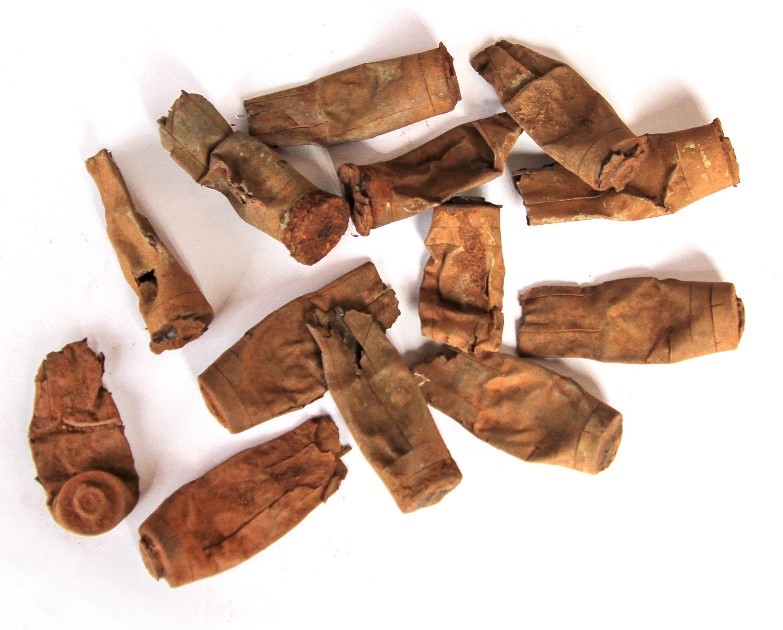
Enfield rifle shells, recovered from Pelham Reserve in 2018 2020.141
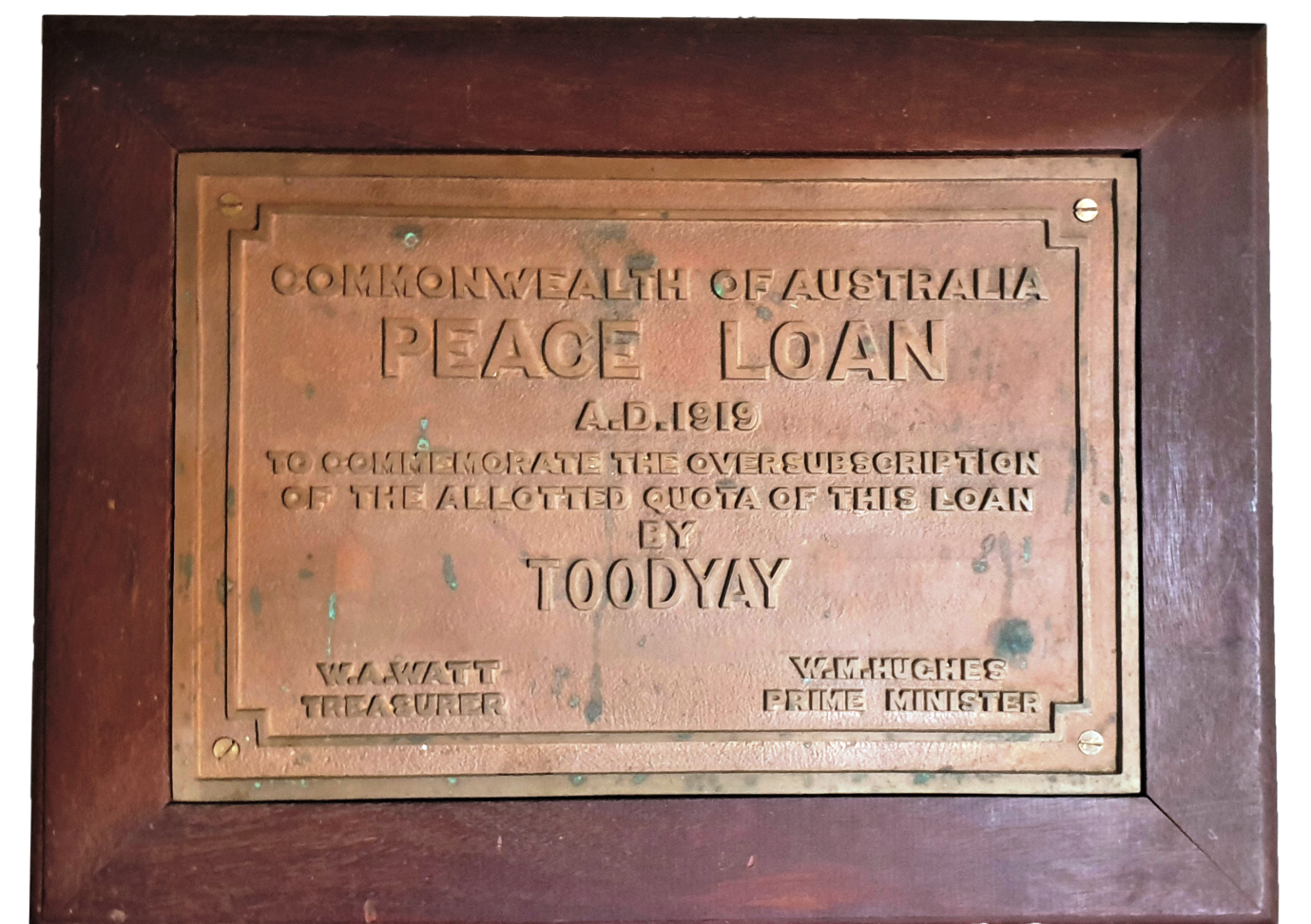
During and after WW1 the Australian Government instigated a series of loans to meet the ongoing costs of the war. The public loaned the Government money in return for interest. The Toodyay community received a brass plaque in recognition of their outstanding support. 2007.2
A wartime childhood – documents from 1915
For Toodyay children such as Harold Donegan, Lartie Whitfield and Kathleen Ewels formalised schooling continued throughout the war years. These children would have been profoundly affected by the absence of important men in their lives including family members, neighbours and teachers.
Harold’s cousin was killed in action in 1916, as was Kathleen’s brother a year later. Lartie’s brother was wounded but survived the war.
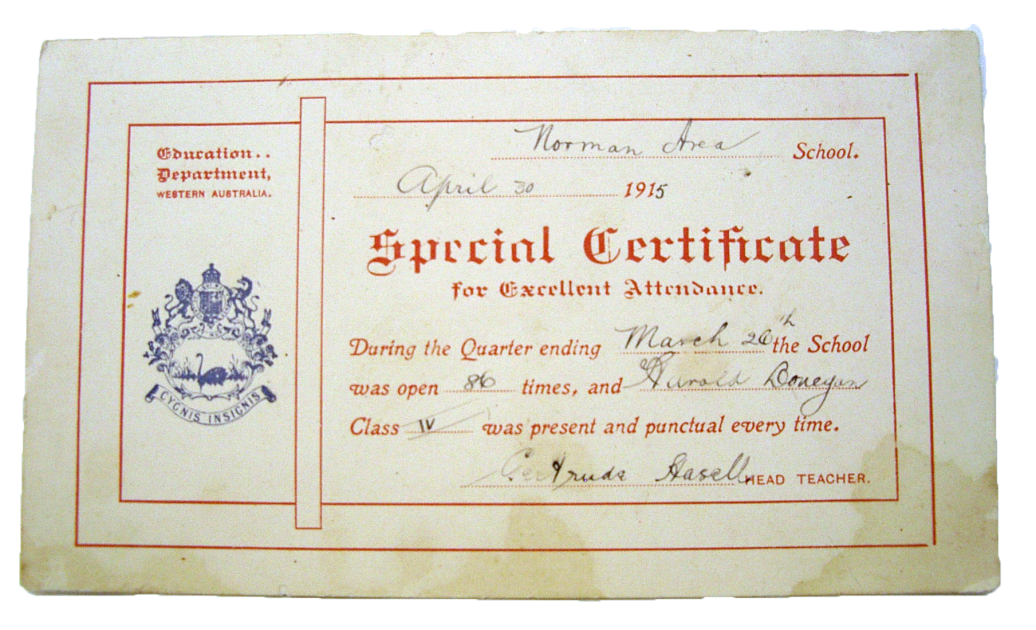
School certificate Harold Donegan, aged 10 2001.180
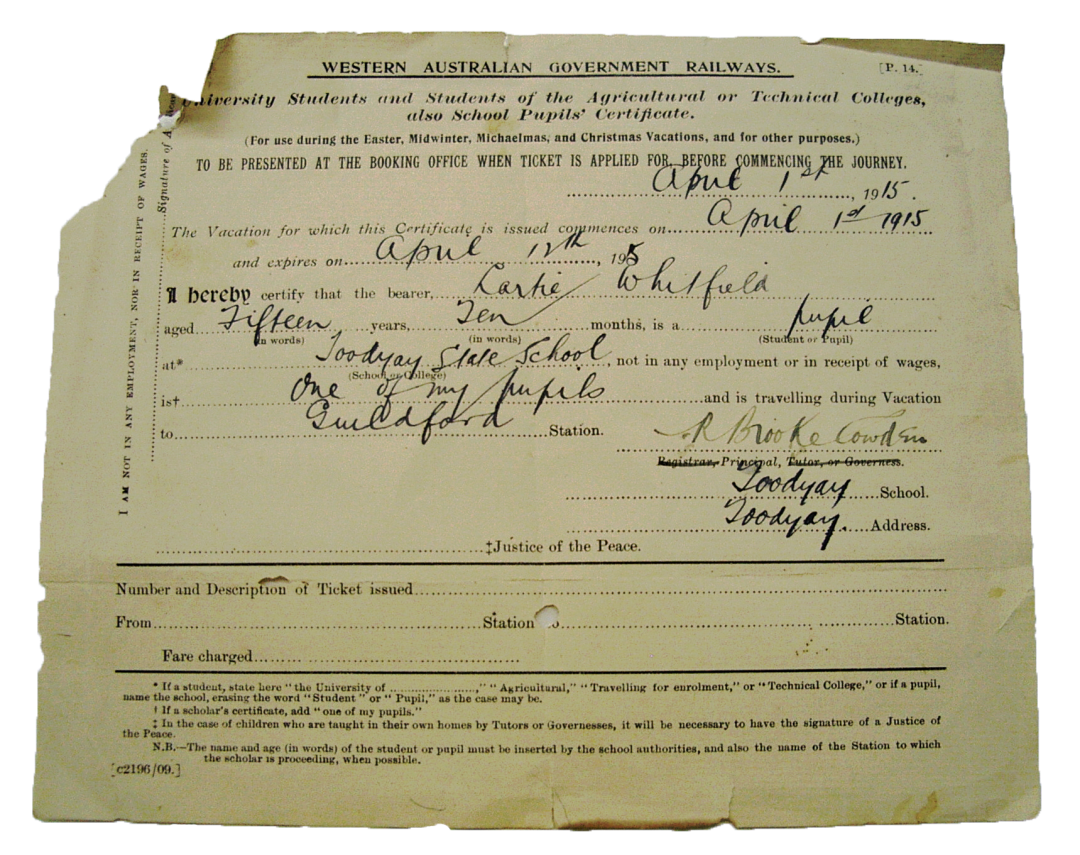
Student rail pass Lartie Whitfield, aged 15 2001.170
After the war ended
Returning home
Many soldiers were affected both mentally and physically from their experiences in battle and found it difficult to cope when they returned home.
During 1928 returned soldiers Herbert Matthews and Henry Ferguson were confined to the Toodyay lock-up for minor offences. Comments made in the ledger indicate both had taken to drinking to excess in the decade after the conclusion of the war.
A few months later the Toodyay Herald reported that Herbert Matthews had died suddenly of heart failure in his sleep. He was 36 years old.

Register of Local Prisoners, Toodyay 1908-1928 2002.32
The Returned Sailors’ and Soldiers’ Imperial League of Australia
The R.S.S.I.L.A. was formed because of concern about the welfare of returned servicemen. The organisation lobbied politicians and the wider community about issues such as care, compensation and commemoration. The Toodyay Sub-branch was active by February 1919.
This organisation has changed its name several times and today is called the Returned & Services League (R.S.L.) of Australia Limited.
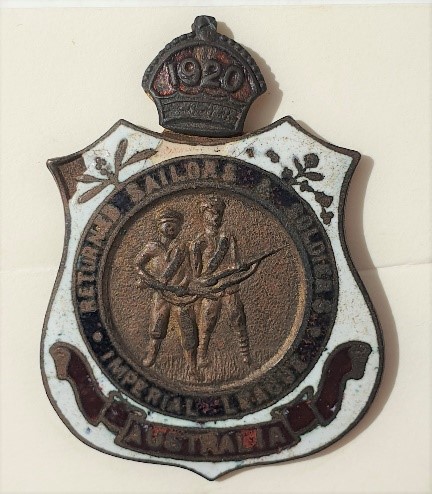
R.S.S.I.L.A. badge, 1920 2001.388
Toodyay – a Trophy Town
At the end of WW1 trophies were collected in England and sent to Melbourne for allocation to different towns and shires. Toodyay was offered a Machine Gun.
The gun arrived at the end of May 1921 and was placed at the front of the Road Board Chambers. Here it remained until May 1937, by which time it was considered a ‘doubtful adornment’ and ‘banished to the back of the building’.
The fate of the Toodyay Road Board Machine Gun trophy is unknown, but it is likely it was requisitioned as scrap metal during WW2, probably around 1941/2.
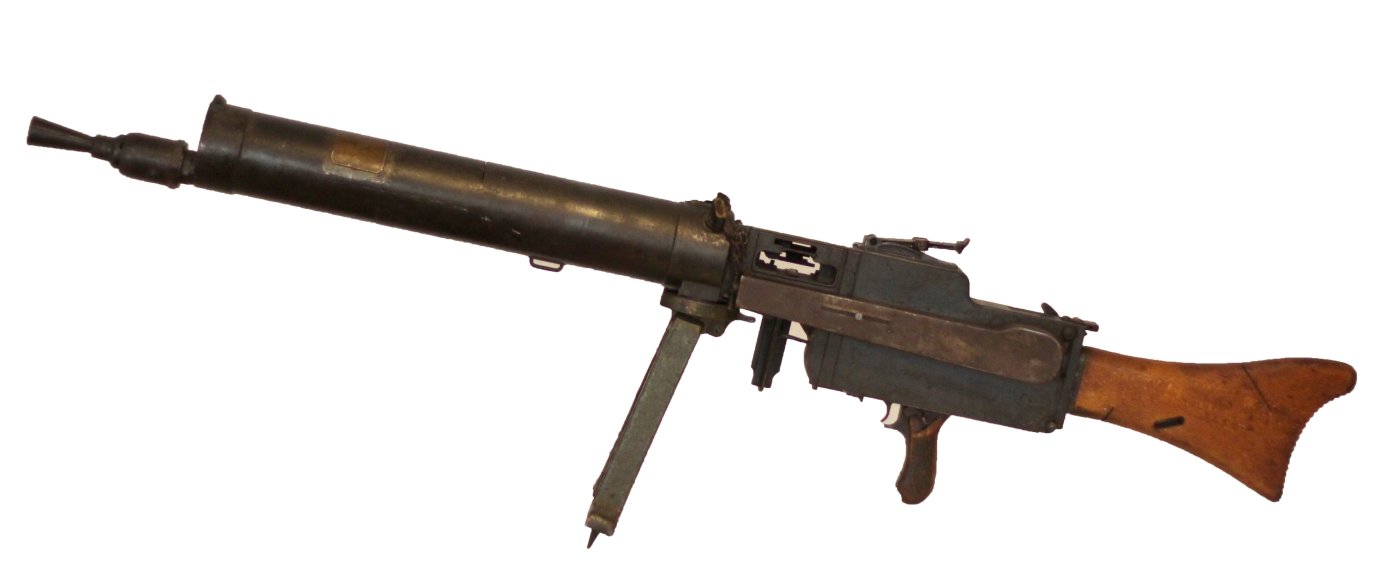
The machine gun sent to Toodyay as a trophy was likely the MG 08/15. It was operated by two trained infantrymen lying on the ground in a prone position.
Image courtesy Wikipedia
District honour rolls
District rolls of honour and honour boards were created through local efforts, as a means of acknowledging the commitment of the community to Australia’s armed forces.
Which names were included was decided by those creating the roll. The names on this roll do not completely match the honour roll in the Toodyay Memorial Hall.
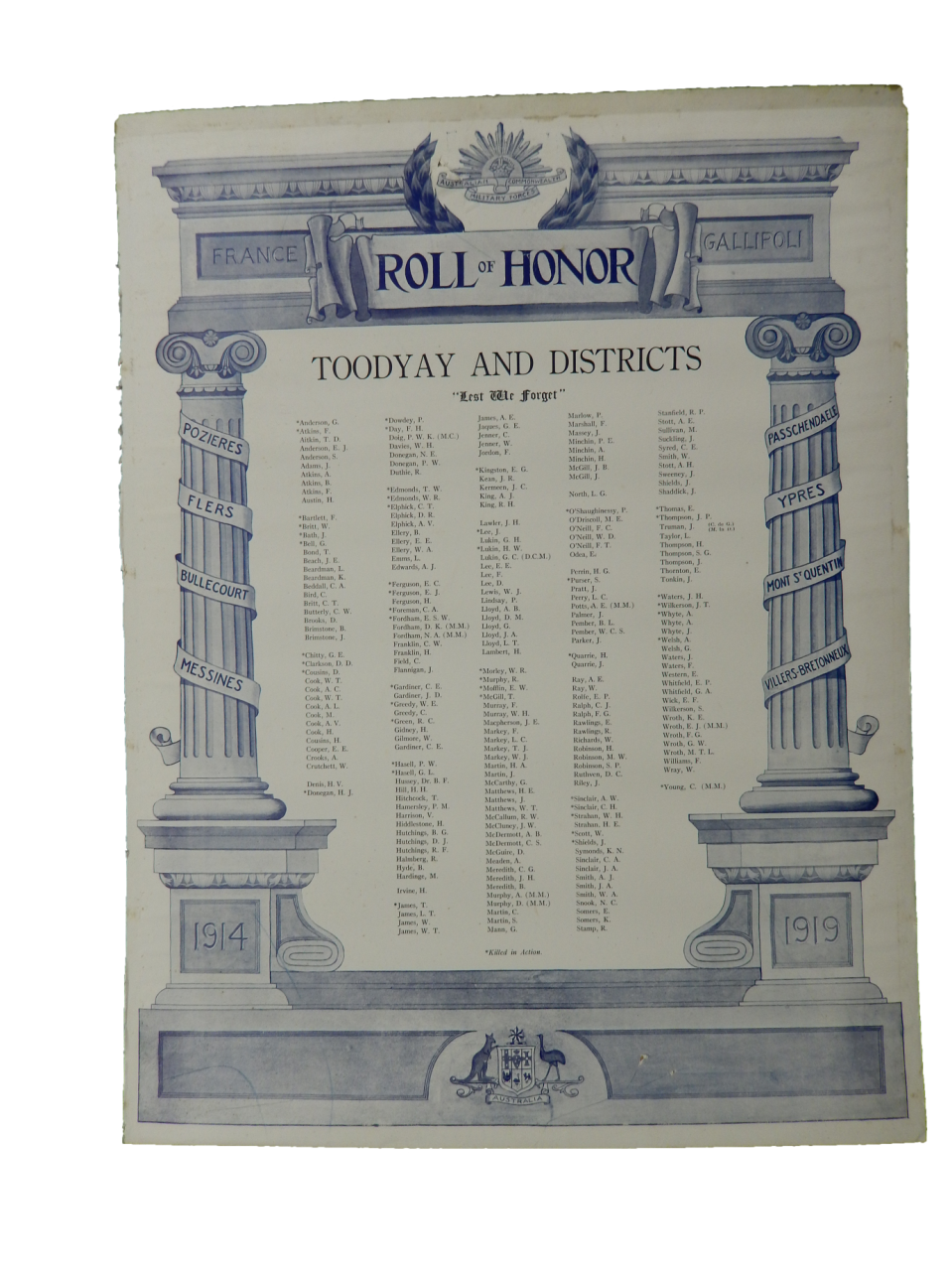
Toodyay & Districts Roll of Honor 1914-1919, paper poster glued onto straw board. Early 1920s and commercially printed; a similar design was used right across Australia.
The accepted spelling of the word ‘honour’ in Australia at this time was ‘honor’ and it is not clear when the spelling shift occurred. 2001.276
Posters
Australian war poster produced from an engraving by Osboldstone & Co Pty. Ltd., Melbourne c1920.
Sir Joseph John Talbot Hobbs, pictured at bottom right, was present at the unveiling of the new Toodyay war memorial on ANZAC day in 1921. Hobbs was also the architect of the Bendigo Bank building in Stirling Terrace, Toodyay.
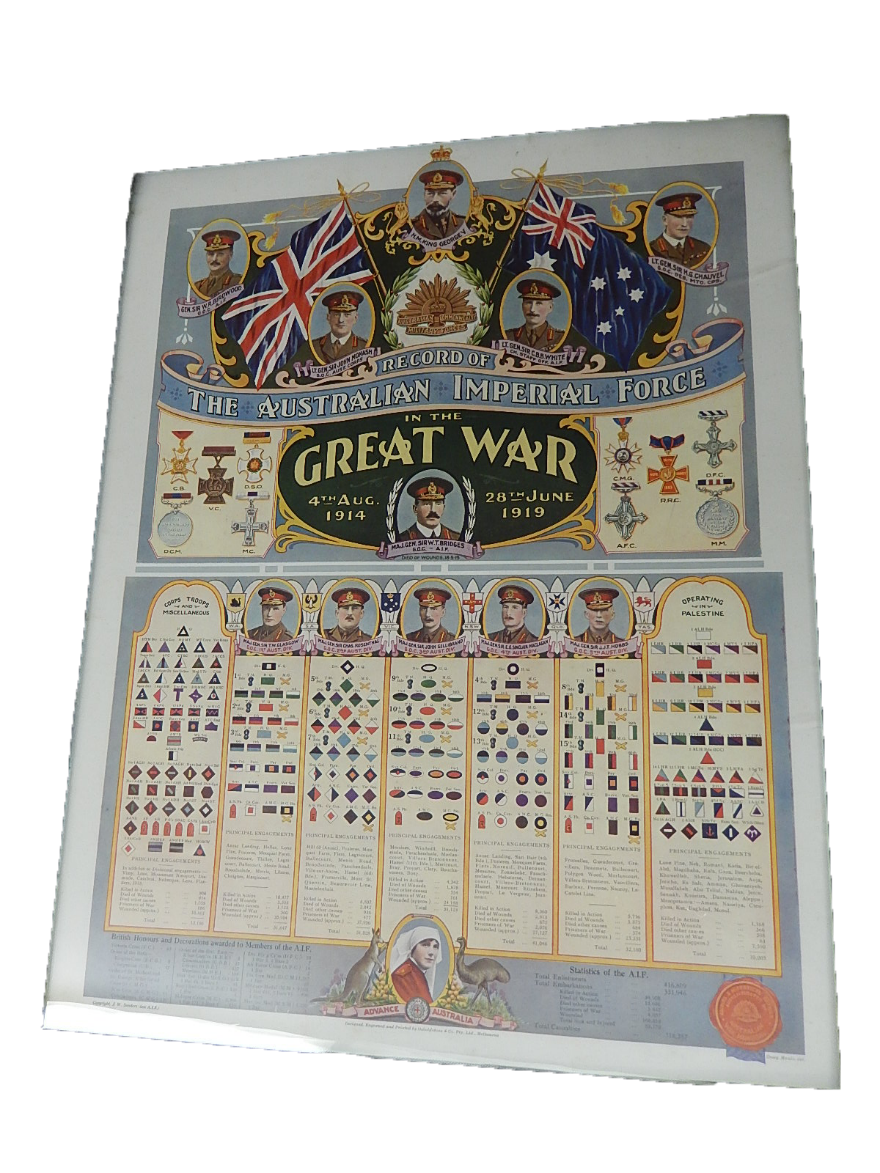
Record of the Australian Imperial Force in the Great War 1914-1919 2001.274
Toodyay War Memorial
During the 1920s ANZAC Day became established as a National Day of Commemoration for the Australian and New Zealand soldiers who died during World War One
After the war, a public appeal was held to raise fund for a war memorial in Toodyay. In 1921 an obelisk made from polished West Australian granite was dedicated to the men of the Toodyay district who had lost their lives.
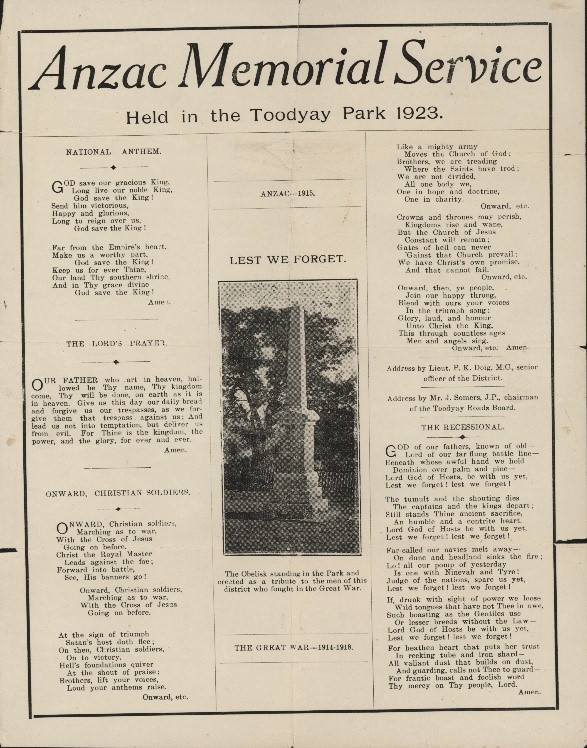
ANZAC memorial service program at Toodyay 1923 2008.89
Acknowledgement

The “Remembering Them Project” offered financial and professional support to 32 regional Western Australian museums leading up to and during the centennial commemorations of the First World War 1914-1918.
The Lotterywest supported project was run collaboratively between the Royal Western Australian Historical Society, AMaGA WA (formerly known as Museums Australia WA Branch) and the Western Australian Museum.
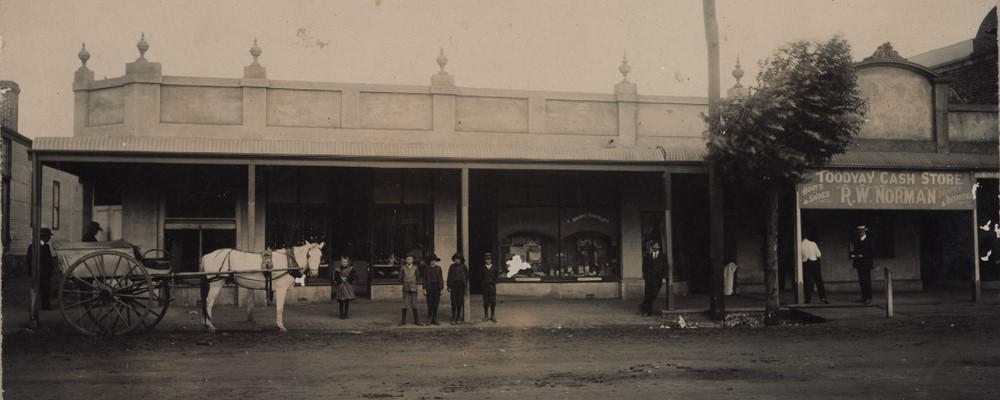
Stirling Terrace, Toodyay 1910s 2008.39